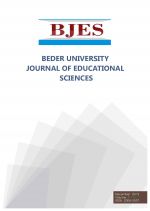
The Autobiographical and National Yeast of E. Halili's Poetry under Narrative Interpretive Observation
Abstract
Albanian is spoken and written in two main dialects: The tosk and the geg ones. The tosk is used in South Albania and geg in the north Albania. The national literary tradition recognizes achievements in both dialects so much so that the Tosk dialect lies at the core of the construction of what is called the official Albanian language. The geg dialect is a dialect in which important figures and personalities of Albanian culture, art and literature have written, leaving a rich and very enviable fund of literary critics of art and moreover of scholars of language and dialectology. The poet Erenestina Halili writes exactly in the Geg dialect. What makes this enterprise special and that has become part of our study, is the return of this dialect and autochthonous phraseology of the province of Mirdita when this road, it seemed, had already become unexplored. This paper sought to highlight the rare characteristics of the transmission of the geg dialect, the poet's ability to grasp, treat and use them in verse with the right musicality. We also wanted to underline the autochthony and originality of the Albanian land conceived in verses in the volume Gj�ma e er�s! The hypothesis we tried to test was that of the continuity of the tradition in geg writing by emphasizing special linguistic, ethnographic and anthropological features and characteristics. The method of study, analysis and comparison revealed that the poet has managed to resume the path left halfway and to pave new paths to follow.
Keywords
Ethnographic, Geg dialect, Linguistic, Culture, Poetry
Authors
Alma Dema
Download Article

This work is licensed under a Creative Commons Attribution 4.0 International License.
Warning: mysql_free_result() expects parameter 1 to be resource, null given in /var/www/journals/bjes.beder.edu.al/article.php on line 45